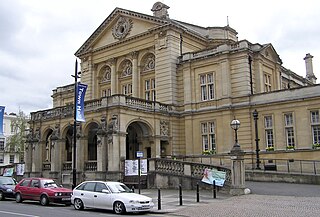
Cheltenham is a spa town and borough on the edge of the Cotswolds in Gloucestershire, England. Cheltenham became known as a health and holiday spa town resort following the discovery of mineral springs in 1716, and claims to be the most complete Regency town in Britain.
The Birmingham and Gloucester Railway (B&GR) was the first name of the railway linking the cities in its name and of the company which pioneered and developed it; the line opened in stages in 1840, using a terminus at Camp Hill in Birmingham. It linked with the Bristol and Gloucester Railway in Gloucester, but at first that company's line was broad gauge, and Gloucester was a point of the necessary but inconvenient transhipment of goods and passengers onto 4 ft 8+1⁄2 in gauge that became the national standard. Nearly all of the original main line remains active as a "trunk" route, also known as an arterial route or line.

Cheltenham Spa railway station serves the spa town of Cheltenham in Gloucestershire, England. Situated on the Bristol-Birmingham main line, it is managed by Great Western Railway, despite most services being operated by CrossCountry which does not manage any stations. It is located about one mile from the town centre. The official name of the town is simply Cheltenham but, when the station was renamed in 1925, the London, Midland and Scottish Railway chose to add Spa to the station name. It is a key regional interchange and is the busiest station in Gloucestershire, as well as one of the busiest railway stations in South West England.

Cheltenham is a constituency in Gloucestershire represented in the House of Commons of the UK Parliament since 1832. As with all constituencies, it elects one Member of Parliament (MP) by the first past the post system of election at least every five years. Since 2015, its MP has been Alex Chalk, who was appointed Secretary of State for Justice in 2023.
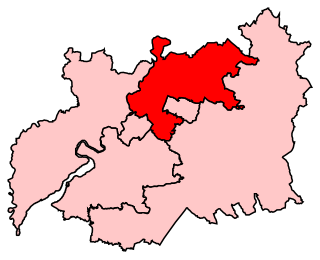
Tewkesbury is a constituency in Gloucestershire represented in the House of Commons of the UK Parliament since its 1997 recreation by Laurence Robertson, a Conservative.

Charlton Kings is a contiguous village adjoining Cheltenham in Gloucestershire, England. The area constitutes a civil parish of 10,396 residents (2011).

Leckhampton is a village and a district in south Cheltenham, Gloucestershire, England. The area is in the civil parish of Leckhampton with Warden Hill and is part of the district of Cheltenham. The population of the civil parish taken at the 2011 census was 4,409.

Doncaster Corporation Tramways was an electric tramway network serving the town of Doncaster, England. It was authorised in 1899, and the first route to Bentley opened in 1902. This remained separated from the rest of the system until North Bridge was built to carry traffic over the Great Northern Railway main line to Edinburgh. Soon afterwards, deep mining of coal began in the area, and several extensions to the system were made between 1913 and 1916 to serve new communities which developed around the pit heads. The Racecourse route was unusual, in that it had balloon loops at both ends to enable almost continuous running on race days, a feature that was not common in England, and only found favour in Europe in the 1950s and 1960s.
The Cheltenham and Great Western Union Railway was a railway company intended to link Cheltenham, Gloucester and Swindon, in England. It was authorised in 1836 but it found it very hard to raise money for the construction, and it opened only a part of its line, between Swindon and Cirencester, in 1841. It sold its business to the Great Western Railway, which quickly built the line through to Gloucester in 1845 and Cheltenham in 1847; part of that route was shared with other companies.
The Banbury and Cheltenham Direct Railway (B&CDR) was a railway company through the Cotswolds in England that built a line between points near Banbury and Cheltenham. Its principal objective, as well as a general rural rail service, was the conveyance of iron ore from the East Midlands to South Wales.

The Gloucester and Cheltenham Tramroad, also known as the Gloucester and Cheltenham Railway, connected Gloucester and Cheltenham with horse-drawn trams. Its primary economic purpose was the transport of coal from Gloucester's docks to the rapidly developing spa town of Cheltenham and the transport of building stone from quarries on nearby Leckhampton Hill.
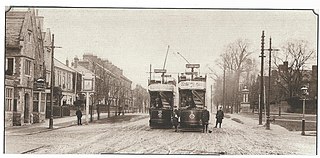
Northampton Corporation Tramways operated the tramway service in Northampton between 1901 and 1934.

The Northampton Street Tramways Company operated a horse powered tramway service in Northampton between 1881 and 1901.

Chester Corporation Tramways operated a tramway service in Chester between 1903 and 1930.
The Worcester Electric Traction Company operated a tramway service in Worcester between 1904 and 1928.
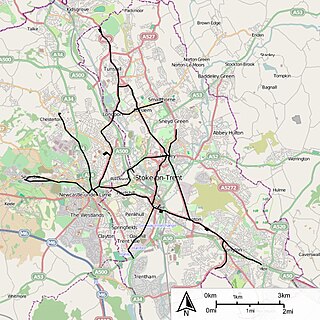
The Potteries Electric Traction Company operated a tramway service in The Potteries between 1899 and 1928.
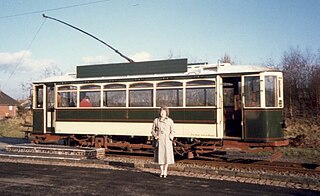
The Dudley, Stourbridge and District Electric Tramways Company operated an electric tramway service between Dudley and Stourbridge and also other lines in the neighbourhood between 1899 and 1930.
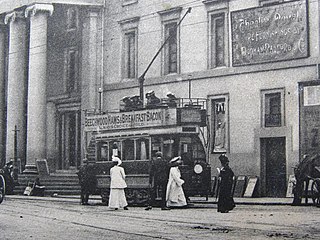
The tramways in Plymouth were originally constructed as four independent networks operated by three different companies to serve the adjacent towns of Plymouth, Stonehouse and Devonport in Devon, England. The merger of the 'Three Towns' into the new borough of Plymouth in 1914 was the catalyst for the three companies to join up under the auspices of the new Plymouth Corporation. The network was closed in 1945, partly as a result of bomb damage during World War II.














